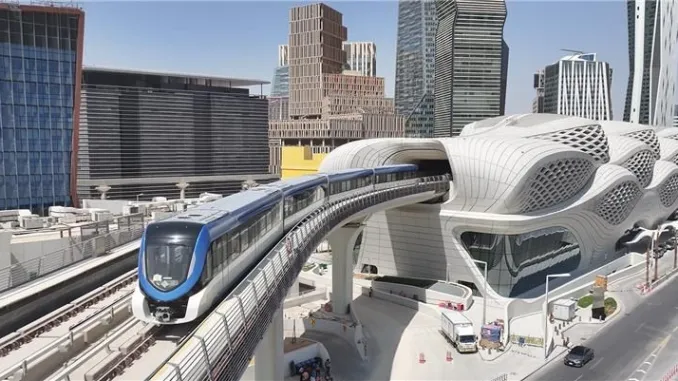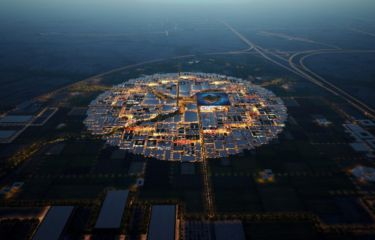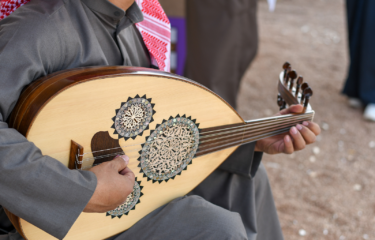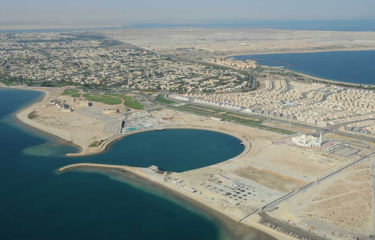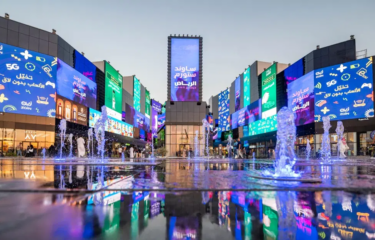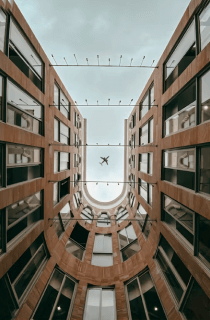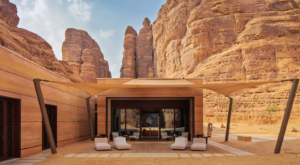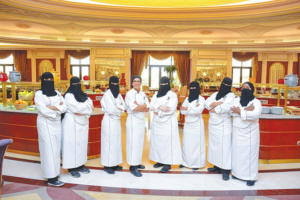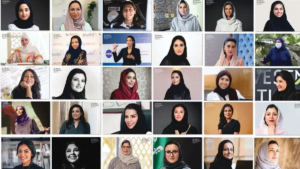Imagine a future where getting around Riyadh is simple, fast, and stress-free. No more battling traffic jams or figuring out complex routes. That future is becoming a reality with the Riyadh Metro, a system that is transforming public transport in Saudi Arabia. This state-of-the-art project is designed to make daily travel convenient for residents and visitors while reducing the city’s dependence on cars.
The Riyadh Metro is a vision of modern urban living. As one of the most advanced transit networks in the world, it offers clean, eco-friendly, and efficient travel options for millions. It’s part of Saudi Arabia’s larger push to improve public infrastructure and mobility, aligning with the goals of Vision 2030. Whether you’re commuting to work, heading to a tourist attraction, or exploring the city, the metro is designed to make your journey faster and easier.
This guide will walk you through everything we know about the Riyadh Metro—its routes, facilities, and what makes it such a game-changer for the Kingdom’s capital. Let’s dive into how this groundbreaking system is reshaping the way people experience Riyadh and setting a new standard for public transport in Saudi Arabia.
Riyadh Metro’s Long-Awaited Beginning
Riyadh Metro’s journey started in 2014, driven by a vision to redefine urban transportation in Saudi Arabia. Initially planned to open within four years, construction faced delays, especially during the COVID-19 pandemic. By 2021, testing began on select lines, giving residents a glimpse of what was to come. Finally, on December 1, 2024, the first three of six lines—Lines 1, 4, and 6—opened to the public, sparking excitement across the city.
Within days, the Metro became the talk of the town. Residents left their cars behind to explore this new mode of transport, from students commuting to classes to professionals heading to work. More lines are on the horizon, with Lines 2 and 5 set to open on December 15, 2024, and Line 3 expected to follow on January 5, 2025.
Cutting-edge Facilities and Eco-Friendly Design
The Riyadh Metro sets a benchmark in modern public transport in Saudi Arabia, combining cutting-edge facilities with an eco-conscious design. Fully automated trains ensure efficiency and comfort, offering separate carriages for families, single riders, and first-class passengers. Inside the stations, solar panels generate 20% of the energy needs, making the system environmentally sustainable.
With the Metro expected to eliminate 250,000 car trips daily and save 400,000 liters of fuel, it’s not just convenient—it’s essential for Riyadh’s future. Key hubs like the King Abdullah Financial District (KAFD) Station, Western Station, Qasr Al-Hukm District Station, and STC Station serve as major transit points, providing amenities such as parking, retail shops, and spacious, air-conditioned waiting areas.
A Closer Look at the Metro Stations
Each Riyadh Metro station is an architectural and functional masterpiece that reflects Saudi Arabia’s commitment to modernization while honoring its cultural roots. The design of the stations combines innovation with elements inspired by traditional Saudi architecture.
For example, mashrabiya-inspired facades not only provide aesthetic appeal but also improve energy efficiency by offering shade and controlling natural light. Some stations, such as the iconic King Abdullah Financial District (KAFD) Metro Station, feature intricate lattice-like exteriors inspired by desert landscapes, which also enhance structural integrity and environmental performance.
Inside the stations, the facilities cater to every traveler’s comfort and convenience. Stations are fully air-conditioned and equipped with state-of-the-art amenities such as free Wi-Fi, multilingual signage, and ample seating areas.
Accessibility is a key focus, with escalators, elevators, and ramps designed to accommodate passengers with reduced mobility. Beyond functionality, the stations are a cultural experience, featuring art installations and architectural details inspired by Saudi heritage, making them more than just transit hubs.
Energy efficiency and sustainability are at the forefront of Riyadh Metro’s design. Solar panels integrated into the stations contribute up to 20% of their energy needs. Sliding door panels on platforms help conserve cool air, while advanced cooling systems automatically adjust based on passenger density. These features have earned facilities like the KAFD Metro Station a Leadership in Energy and Environmental Design (LEED) Gold certification.
Strategically located stations such as Western Station and Qasr Al-Hukm District Station serve as major transit and community hubs. They offer conveniences like parking, retail spaces, and air-conditioned waiting areas, creating a seamless and enjoyable experience for passengers.
Riyadh Metro Lines and Routes
The Riyadh Metro network spans six main lines, covering over 176 kilometers and 85 stations. While only three lines are currently operational, they already connect major hubs across the city:
- Line 1 (Blue Line) runs through King Khalid International Airport, business districts, and residential areas.
- Line 4 (Yellow Line) provides a direct route to important landmarks, including the King Abdullah Financial District.
- Line 6 (Purple Line) links neighborhoods on the outskirts to the city’s core.
With a fully operational network expected by early 2025, the Metro will drastically reduce commuting times and make exploring Riyadh easier than ever.
Riyadh Metro Ticketing and Pricing
Riyadh Metro offers flexible ticketing options to cater to diverse passenger needs. Tickets are divided into Standard Class and First Class, with prices designed to be affordable:
- Standard Class:
- Two-hour pass: SR4
- Three-day pass: SR20
- Seven-day pass: SR40
- Thirty-day pass: SR140
- First Class:
- Two-hour pass: SR10
- Three-day pass: SR50
- Seven-day pass: SR100
- Thirty-day pass: SR350
Tickets can be purchased via the Darb app or from vending machines at all metro stations.
What Makes Riyadh Metro Unique
Sustainability at Its Core
With solar panels powering up to 20% of the stations’ energy needs, the Metro system is designed with environmental impact in mind, taking public transport in Saudi Arabia to the next level. Energy-efficient lighting and ventilation further reduce its carbon footprint.
Safety First
Advanced surveillance systems and real-time monitoring ensure passenger safety. Stations are staffed with trained personnel, and clear evacuation routes are in place.
Convenience for All
Whether you’re a local or a visitor, the Riyadh Metro prioritizes ease of use. Multilingual announcements and digital maps make navigation simple, even for first-timers.
Integration with Urban Life
The Metro is more than a transit system—it’s a community space. Stations serve as cultural hubs, featuring local art and architecture that reflect Riyadh’s identity.
Future of Riyadh Metro for Locals and Visitors
The future of Riyadh Metro promises exciting changes that will transform life in the city and public transport in Saudi Arabia. With three more lines—2, 3, and 5—set to open in the coming months, the network will become fully operational, connecting more neighborhoods and reducing travel times across Riyadh. This means even more people will have access to reliable and efficient public transportation, cutting down the need for cars and easing traffic congestion in one of the busiest cities in the region.
The metro is not just about Riyadh. Long-term plans include expansions to connect nearby cities, making travel across the Kingdom easier and more sustainable. These future extensions could bring tourism and business opportunities to areas beyond Riyadh, helping to boost the national economy.
In line with Saudi Arabia’s Vision 2030, the metro is expected to adopt smart city technologies. Innovations like AI-driven traffic management and real-time data systems are expected that will make traveling more seamless.
Imagine a system that automatically adjusts schedules based on passenger flow or monitors environmental conditions to improve energy use. These features will enhance both convenience and sustainability, making the metro a global leader in urban transportation.
The Riyadh Metro is a step towards a cleaner, smarter, and more connected future. As new lines open and technology advances, it will redefine how people move around Riyadh, offering a glimpse into a modern and progressive Saudi Arabia. Whether you’re a local resident or a visitor, the metro is set to make exploring the city easier, more efficient, and more enjoyable.
FAQs
What are Riyadh Metro’s operating hours?
Currently, the Metro operates from 6:00 AM to midnight, seven days a week.
Where to buy Riyadh metro tickets?
You can purchase tickets via the Darb app or from vending machines at any metro station.
Is Riyadh Metro suitable for tourists?
Absolutely! The Metro connects key landmarks, making it an excellent choice for exploring Riyadh.
Are Riyadh Metro stations accessible for people with disabilities?
Yes, all stations feature elevators, ramps, and dedicated spaces for individuals with mobility challenges.
What additional features can passengers expect?
Passengers enjoy free Wi-Fi, climate-controlled stations, and real-time service updates for a seamless travel experience.

